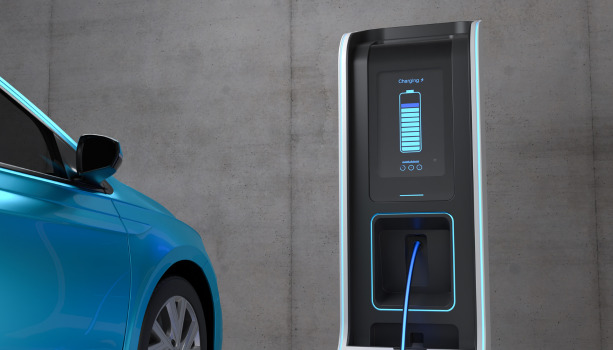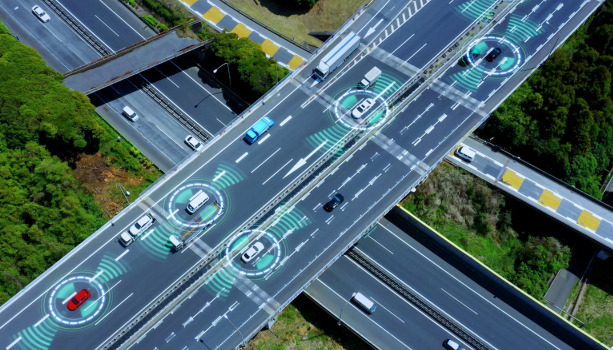Computer on Wheels: The Software-Oriented Car
The E/E architecture of the car is changing dramatically. As the common saying “computer on wheels” suggests, automotive technologies are now divided into two streams: the “wheels” and the “computer”. The “wheels” represent the hardware, the good old engines and hydraulics that keep the car rolling, while the “computer” represents the software programs that give instructions to the hardware on what to do. Cars are literally becoming computers, where software programs utilize hardware resources to deliver results.
This is not to say that hardware is no longer important. Of course, the core of the vehicle still lies in its hardware, which serves as an ultimate indicator of its performance. However, as OEMs continue to introduce software-enabled features from adaptive cruising to hands-free voice command, the average car buyer is caring less and less about horsepower and torque, but more about tech features and carbon footprint. As a result, most of the innovations and breakthroughs in the automotive industry today occur on the software end, guided by four major industry trends: connectivity, electrification, automation, and mobility-as-a-service (MaaS).
Likewise, the more consumers demand these features, the more OEMs must focus on improving them. This cycle has not only brought significant changes to the car manufacturing process but has forced the OEMs and Tier 1 suppliers to redefine their roles and responsibilities, leading to a ripple effect down the entire supply chain.
In this article, we will look at some major changes and trends with regard to vehicle architecture.
Centralization of the E/E Architecture
Up until recently, Tier 1 suppliers have been responsible for both hardware and software. They supply OEMs with complete vehicular parts integrated by the necessary software, while software firms mostly acted as Tier 2 suppliers who served their technologies to the Tier 1 suppliers. This architecture worked because when electronic systems were first brought into cars, they were simple programs that served as add-ons to the existing hardware. Each of these systems were built into an electronic control unit (ECU), which would then get integrated into the hardware. Individual ECUs have very low computing power such that every ECU is designed to control only one part of the hardware. Take the remote key fob for example: the ECU that manages the door lock system receives the signal, then instructs the door on what to do.
However, as more and more sophisticated add-on features were built into the car, the traditional architecture has become very costly and inefficient. Drivers today expect their smart keys to not only control the door lock system, but also allow them to remotely switch on the car, adjust the climate, and even give the car instructions for self-parking. This means that the smart key features alone require up to a dozen of ECUs each in charge of a single function.
To support even more complex features like the adaptive driving assistance system (ADAS), which requires the cooperation of many cameras and sensors, a typical car today can contain up to a hundred ECUs. Clearly, this scattered vehicle architecture is becoming increasingly expensive and unsustainable because there is simply not enough space in a car to accommodate hundreds of ECUs and wires.
This has led to a major change in the electrical and electronic (E/E) architecture of the car. Instead of having an entirely distributed model, with every ECU serving a particular function, the industry is moving towards a centralized E/E architecture. OEMs are starting to group all ECUs by their domains of service in a process called domain consolidation. For instance, all ECUs and sensors with regards to the powertrain are grouped into one domain, while all these with respect to the infotainment system are grouped into another domain. The entire domain is then controlled by the domain controller, which consolidates all the functions within that domain to ensure optimized system performance. Lastly, a gateway collects all information from the domain controllers and communicates such information with external parties when necessary.
This centralized E/E architecture is expected to significantly reduce the number of wires and increase the overall computing power of the vehicle. Expected to become the predominant vehicle architecture by the mid-2020s, this new model will help OEMs reduce manufacturing costs and free up room for more software features to further enhance the capabilities of autonomous vehicles, contributing to a seamless driving experience.
Segregation of Hardware and Software
The increased complexity of software-enabled features has led to another change: the separation of hardware and software in the car manufacturing process. As the E/E architecture becomes centralized, it is no longer efficient to build hardware parts with individual software programs attached. Manufacturers now need to build more complete software programs that oversee a whole domain of functions. As a result, it becomes more efficient to segregate the manufacturing process of hardware and software components.
Therefore, instead of having a single piece of software added onto every hardware element, both the hardware and the software are treated as core components in the architecture. Additionally, with the increased sophistication of software technologies, software components need to be developed on specialized and segregated platforms from the hardware.
Soon after, the industry may reach a point where a few software programs take control of all the functions of the hardware, just like how a single operating system controls all the hardware of a computer.
What it Means for the Supply Chain
For many decades, the automotive supply chain operated like a tier system. The OEMs were at the top of the pyramid, after which Tier 1 suppliers like Magna, Bosch, and Continental supplied completed parts to the OEMs. Raw materials were provided by Tier 2 suppliers. With a sudden surge in software needs throughout the past two decades, software firms joined the supply chain at Tier 2. These firms provided middleware and software development kits for every hardware component and sold them to the Tier 1 suppliers so that they could integrate them into the hardware. Many of the Tier 1 suppliers also set up their own software divisions or acquired software firms to enhance their power.
Today, most Tier 1 suppliers are responsible for integrating software functions into hardware parts, after which the finalized parts are sold to the OEMs. In other words, Tier 1 suppliers oversee the software integration process, while OEMs have the power of determining which parts to use.
However, the current model is facing another disruption. As the E/E architecture gradually becomes centralized, software programs are clearly becoming more crucial to the car. At the same time, the segregation of hardware and software means that more specialized software providers will emerge in the market. The role of the OEMs will be to consolidate the software platforms into their vehicle hardware. Currently, most software components are non-differentiated, meaning that they could be installed across different vehicles. As the centralization process continues, a significant portion of software will be differentiated, which means that they would need to be programmed specifically for individual car models. As such, it is crucial for OEMs to work closely with the software suppliers because once a software platform is fixed, the entire system would need to be built on that platform. Once a software platform is locked up, it becomes very expensive for the OEM to switch to other alternatives.
Clearly, these changes will likely disrupt the tier system and flatten the automotive supply chain so that suppliers of hardware, software, and semiconductors, along with OEMs, play equally important roles. Instead of having one supplier working on top of the other, horizontal collaboration is more important than ever. Eventually, the automotive market could look very similar to the PC and smartphone markets, where hardware manufacturers consolidate components provided by semiconductor firms and software companies.
AUTOCRYPT and Its Role in the Automotive Supply Chain
An automotive cybersecurity vendor, AUTOCRYPT is taking a crucial role in the software end of the vehicle manufacturing process. As an end-to-end solution provider that covers every dimension of security from in-vehicle and V2X, to EV charging and fleet management, AUTOCRYPT is actively working with OEMs and infrastructure developers to build a strong foundation for connected mobility by offering a complete cybersecurity ecosystem.
To stay informed with the latest news on mobility tech and automotive cybersecurity, subscribe to AUTOCRYPT’s monthly newsletter.



